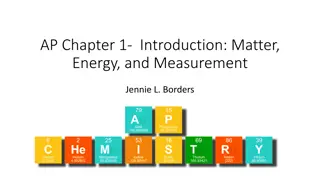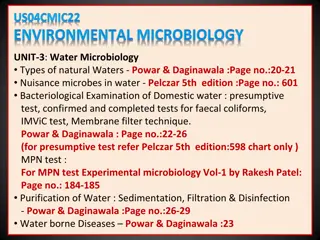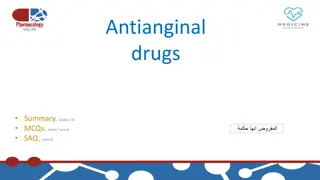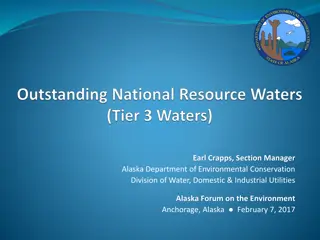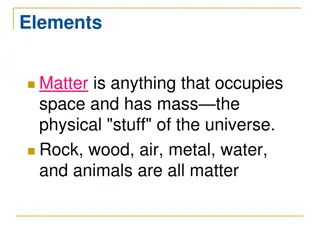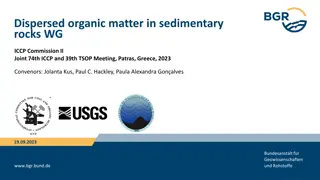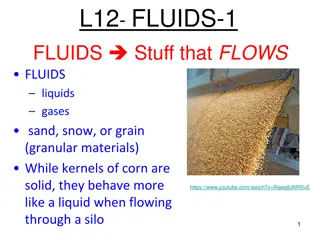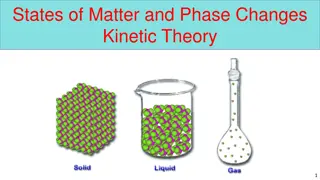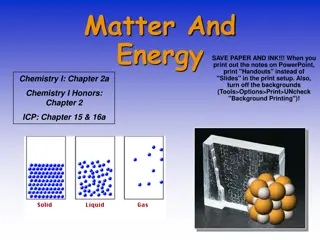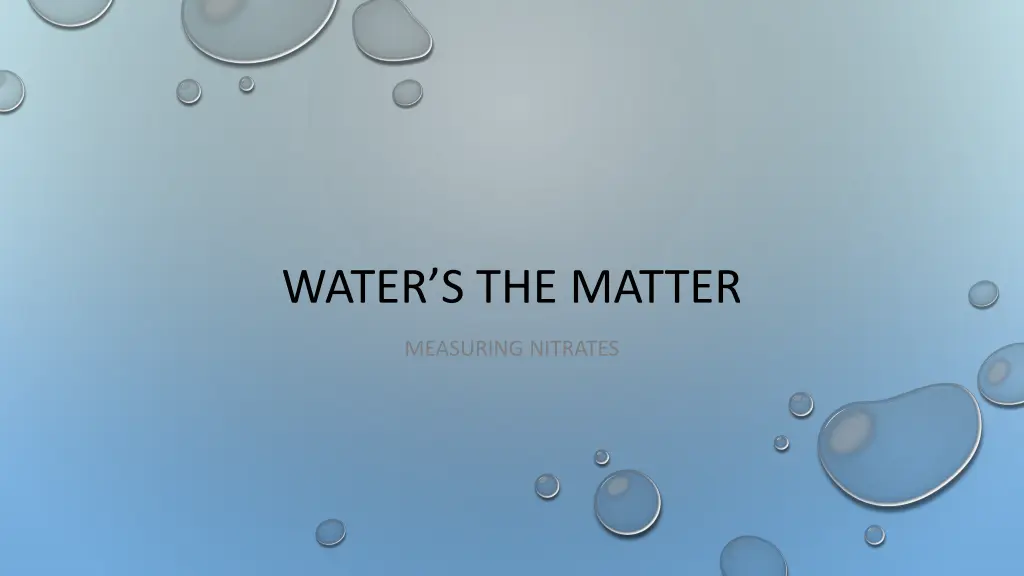
Understanding the Impact of Nitrates on Water Quality
Explore how nitrates can affect water quality and human health in this informative guide. Learn about the relationship between nitrates, aquatic life, and well-being, and discover the importance of monitoring nitrate levels in water sources.
Download Presentation

Please find below an Image/Link to download the presentation.
The content on the website is provided AS IS for your information and personal use only. It may not be sold, licensed, or shared on other websites without obtaining consent from the author. If you encounter any issues during the download, it is possible that the publisher has removed the file from their server.
You are allowed to download the files provided on this website for personal or commercial use, subject to the condition that they are used lawfully. All files are the property of their respective owners.
The content on the website is provided AS IS for your information and personal use only. It may not be sold, licensed, or shared on other websites without obtaining consent from the author.
E N D
Presentation Transcript
WATERS THE MATTER MEASURING NITRATES
NAVIGATION TABLE Water s the Matter: Measuring Nitrates Pre-Test Introduction Lesson Activity Post-Test
Measuring Nitrates Pre-Test Google Assessment
Measuring Nitrates Introduction Introduction
Introduction Measuring Nitrates DOES THE PRESENCE OF NITRATES AFFECT WATER QUALITY? Unlike temperature and dissolved oxygen, the presence of nitrates usually does not have a direct effect on aquatic insects or fish. In other words, aquatic life does not get sick or die from being in water with an excess of nitrates. So, if the nitrates themselves don t kill aquatic life, why are we talking about them? Algae and aquatic plants use nitrates as a source of the nutrient nitrogen. If algae have an unlimited source of nitrogen from nitrates, their growth is unchecked. So, if nitrates make aquatic plants and algae grow well, why is there a problem?
Lesson Measuring Nitrates DOES THE PRESENCE OF NITRATES AFFECT WATER QUALITY? To answer that, first think about this: Which lake is most likely affected by high levels of nitrates? Photo Credit: Paul Terrio, USGS The river in the right picture is as green as pea soup, a result of high concentrations of algae. Large amounts of algae can cause extreme fluctuations in dissolved oxygen. Photosynthesis by algae and other plants can generate oxygen during the day. However, at night, dissolved oxygen may decrease to very low levels as a result of large numbers of oxygen consuming bacteria feeding on dead or decaying algae and plants.
Lesson Measuring Nitrates CAN THE PRESENCE OF NITRATES AFFECT HUMAN HEALTH? People who use wells as a source of drinking water need to monitor the level of nitrates in their well water. If you drink water that is high in nitrates, it can interfere with the ability of your red blood cells to transport oxygen. Infants who drink water high in nitrates may turn "bluish" and appear to have difficulty in breathing since their bodies are not receiving enough oxygen. Just like dissolved oxygen, temperature, and pH, the amount of nitrates in water is determined by both natural processes and anthropogenic (man-made) activities. A body of water may be naturally high in nitrates or have elevated nitrate levels as a result of careless human activities.
Lesson Measuring Nitrates CAN THE PRESENCE OF NITRATES AFFECT HUMAN HEALTH? In this unit, you will be introduced to the concept of nitrates and how nitrates can influence the aquatic environment. The relationship between nitrate and dissolved oxygen levels will be introduced. This unit will also discuss how nitrate levels are influenced by natural as well as anthropogenic processes.
Measuring Nitrates Objectives After completing this module, you will be able to: Understand the sources of nitrates in water, including anthropogenic activity, and the role that nitrates play in an aquatic ecosystem. Describe the effects of excess nitrates on water quality and human health. Understand how to collect and examine data on nitrogen pollution in an aquatic environment. Investigate the effect of nitrates on an aquatic ecosystem.
Measuring Nitrates Lesson Lesson
Lesson Measuring Nitrates WHY DO WE NEED NITROGEN? WHAT ARE THE SOURCES OF NITROGEN? Nitrogen is essential for all living things: animals and plants. Nitrogen forms a part of the proteins, DNA, and RNA that are found in cells. Animals get nitrogen by eating plants and other animals. Just like animals, plants require nitrogen to grow and survive. But they do not get nitrogen by consuming proteins like animals do. Plants get nitrogen from water and from the soil. They get nitrogen by absorbing it in the form of nitrates and ammonium. Nitrates are the major source of nitrogen for aquatic plants.
Lesson Measuring Nitrates WHY DO WE NEED NITROGEN? WHAT ARE THE SOURCES OF NITROGEN? Nitrates are not utilized by aquatic organisms such as fish and aquatic insects, but nitrates are used by algae and plants. Notice that this is a cycle that recirculates nitrogen between air and soil. For a video that explains the nitrogen cycle, click here. For more on the nitrogen cycle and other cycles in ecosystems, see our lesson on exchange cycles here
Lesson Measuring Nitrates WHERE DO NITRATES COME FROM? All aquatic organisms excrete wastes and aquatic plants and organisms eventually die. These activities create ammonia. Some bacteria in the water change this ammonia to produce nitrite which is then converted by other bacteria to nitrate. Nitrates (NO3-) are an oxidized form of nitrogen and are formed by combining oxygen and nitrogen. Nitrates also come from the earth. Soil contains organic matter, which contains nitrogen compounds. Just like the ammonia in water, these nitrogen compounds in the soil are converted by bacteria into nitrates.
Lesson Measuring Nitrates WHERE DO NITRATES COME FROM? Although nitrates occur naturally in soil and water, excess levels of nitrates can be considered to be a contaminant of ground and surface waters. Most sources of excess nitrates come from anthropogenic activity. The source of excess nitrates can usually be traced to agricultural activities, stormwater drainage, human wastewater, industrial pollution, and wastes from in and around the home. Nitrogen fertilizers have been applied to fields, yards, and golf courses to promote the growth of grass and crops. Rainwater can wash nitrates in the fertilizers into streams and rivers or the nitrates can seep into the ground water. This runoff problem tends to be most serious when the fertilizer is animal waste or manure.
Lesson Measuring Nitrates WHERE DO NITRATES COME FROM? In addition to animal waste, untreated human sewage can contribute to nitrate levels in surface and ground water. Leaking or poorly functioning septic systems are a source of such nitrates. City sewage treatment plants treat sewage to make it non-hazardous, but treatment plants still release nitrates into waterways. Also, septic systems do not always operate properly or remove enough nitrogen before discharging water into waterways. Too much nitrogen and phosphorus in the water can have diverse and far-reaching impacts on public health, the environment and the economy. Photo credit: Bill Yates.
Lesson Measuring Nitrates WHERE DO NITRATES COME FROM? Industrial sources of nitrogen include electric power generation and fossil fuel combustion. Although having excess nitrates is usually associated with some type of anthropogenic activity, excess nitrates can come from natural sources. A good example of this is the presence of large numbers of birds that might live in or around a body of water. Bird excretions that get into the water can create large amounts of nitrates.
Lesson Measuring Nitrates WHERE DO NITRATES COME FROM? For a video that explains the nitrogen cycle and how it is affected by anthropogenic activity, click here. For a video about nutrient pollution, click here. For more on the nitrogen cycle and other cycles in ecosystems, see our lesson on exchange cycles here. Image from: Sources of nitrogen delivered to the Gulf of Mexico (usgs.gov)
Lesson Measuring Nitrates HOW DO NITRATES AFFECT HUMAN HEALTH? Nitrate concentrations are monitored in municipal water supplies and foods to prevent exposing people to the potential harmful effects of high levels of nitrates. Nitrates are highly soluble, meaning that they easily dissolve in water. For many people in rural areas, the primary source of drinking water is well water, which may be contaminated with nitrates. Nitrates are colorless and odorless, so their presence cannot be determined without the use of special testing equipment.
Lesson Measuring Nitrates HOW DO NITRATES AFFECT HUMAN HEALTH? Nitrates can interfere with the ability of our red blood cells to carry oxygen. Infants are more at risk of nitrate poisoning than older children or adults. Babies can turn "blue" when there is not enough oxygen being transported by their blood. This "bluebaby syndrome" (technically known as methemoglobinemia) is a serious condition that can cause brain damage or death. Image from: Areas at high risk of nitrogen contamination of groundwater (usgs.gov)
Lesson Measuring Nitrates HOW DO NITRATES AFFECT THE HEALTH OF AQUATIC ANIMALS? Fish and aquatic insects can be affected indirectly by increased nitrate concentrations in the water. Basically, any excess nitrate in the water is a source of fertilizer for aquatic plants and algae. In many cases, the amount of nitrate in the water is what limits how much plants and algae can grow. If there is an excess level of nitrates, plants and algae will grow excessively. This is called an algal bloom. Harmful algal blooms can be green, blue, red or brown. They can be scummy or look like paint on the surface of the water.
Lesson Measuring Nitrates HOW DO NITRATES AFFECT THE HEALTH OF AQUATIC ANIMALS? Excess plants in a body of water can create many problems. An excess in the growth of plants and algae create an unstable amount of dissolved oxygen. During the day, there will be usually be high levels of dissolved oxygen, and at night the levels of oxygen can decrease dramatically. This will create stressful conditions for fish. If they are stressed for a significant part of the day, they will not behave normally or reproduce. If the conditions persist for a long period of time, the stressed fish species may choose to leave that area or die off.
Lesson Measuring Nitrates HOW DO NITRATES AFFECT THE HEALTH OF AQUATIC ANIMALS? Excess algae or plant growth is also unsightly. If you've ever been to a beach where mats of rotting algae wash up on shore or the bottom of the lake is teaming with weeds, it's probably because excess nitrates are available for plant growth. Several years ago, excess nitrates in Lake Erie created such a problem; fortunately, thanks to the efforts of concerned citizens, Lake Erie is today a much healthier aquatic environment. MODIS satellite Image of Lake Erie on September 3, 2011, overlaid over map of Lake Erie tributaries. This image shows the bloom about 6 weeks after its initiation in the western basin. On this date, it covers the entire western basin and is beginning to expand into the central basin, where it continued to grow until October. Image from: https://www.pnas.org/content/110/16/6448
Lesson Measuring Nitrates HOW DO NITRATES AFFECT THE HEALTH OF AQUATIC ANIMALS? Excess plants and algae will also create conditions where organic matter accumulates. High densities of algae will create a condition where sunlight cannot reach very far into the water. Since plants and algae require some sunlight, plants and algae not receiving sunlight will die off. These dead plant materials will settle to the bottom of the water and bacteria that feed on decaying organic material will greatly increase in numbers. These bacteria will consume oxygen and, therefore, the level of dissolved oxygen in this water will fall to levels that are too low for many aquatic insects and fish to survive. This process is called eutrophication. Also, this can cause extreme changes in habitat. Fish that need gravel or sand for spawning may find nothing but mats of vegetation and muck.
Lesson Measuring Nitrates HOW DO NITRATES AFFECT THE HEALTH OF AQUATIC ANIMALS? THE FUTURE Nutrient pollution is one of America s most widespread, costly and challenging environmental problems. Farmers and ranchers routinely use nutrient fertilizers on their lands to help produce food to feed our country and the world. What seems like good farming practices are the same practices that pollute the water. The Environmental Protection Agency has a program that aims to help reduce nutrient pollution. To read more about it, click here. For information on what you can do to reduce your contribution to nitrogen pollution, click here.
Measuring Nitrates Activity Activity
Activity Measuring Nitrates CLICK ON THE LINK TO SEE THIS UNIT S ACTIVITY Activity- Nitrates and Phosphates and Algae, Oh My! Activity 2-Testing Water for Nitrate
Measuring Nitrates Post-Test Google Assessment

